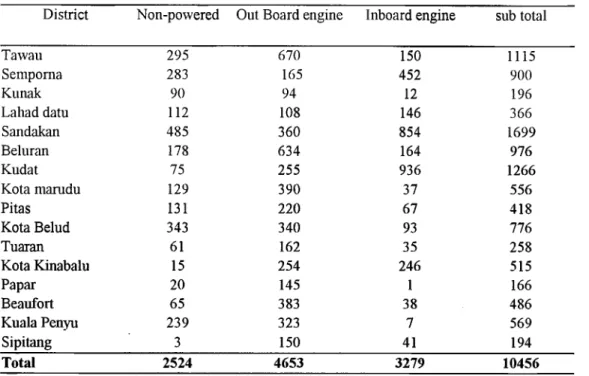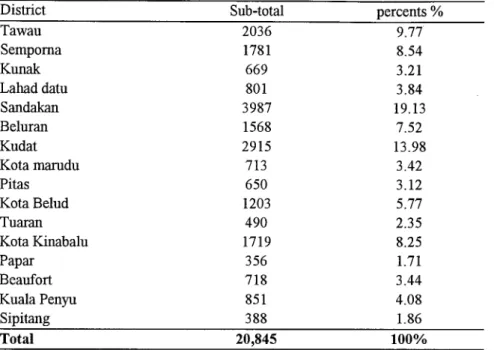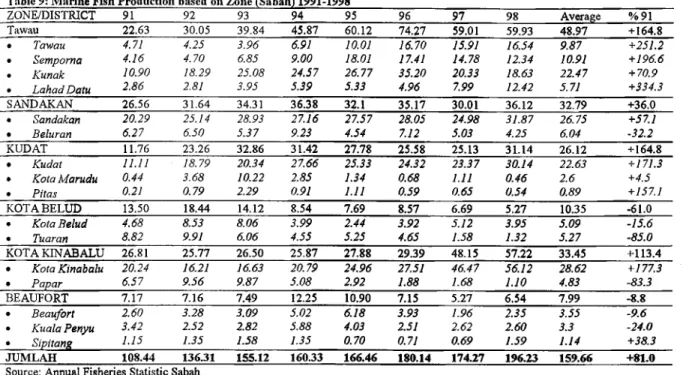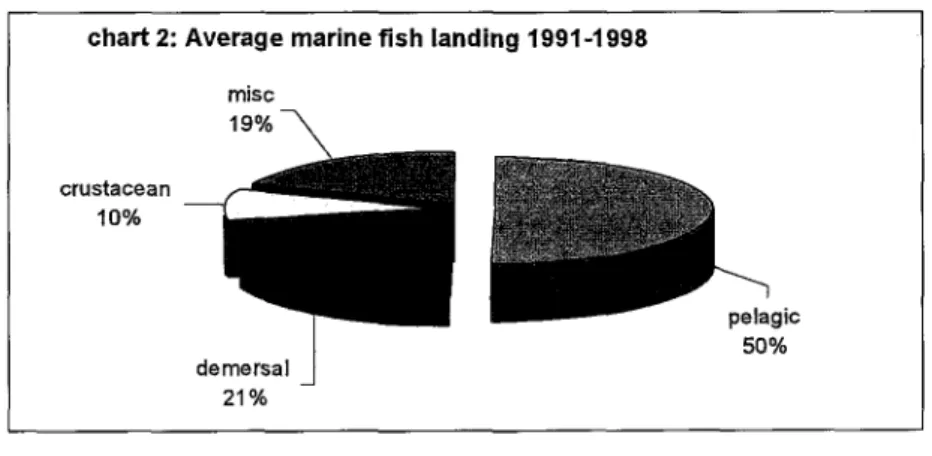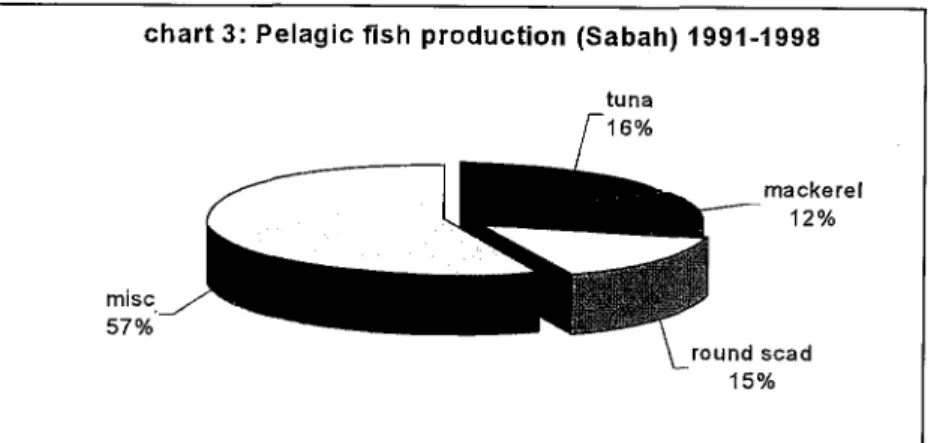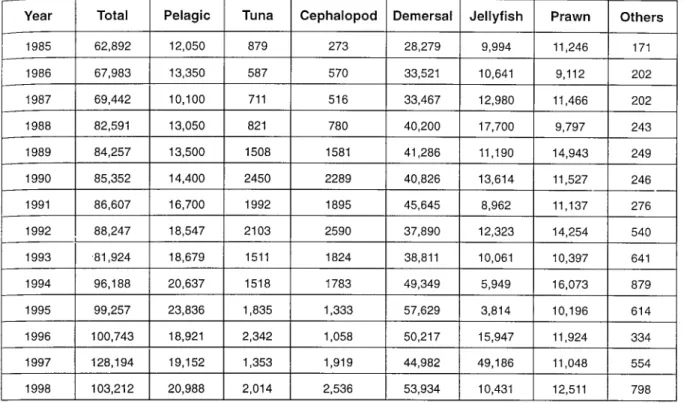The workshop was informed that MFRDMD would hold a workshop on the application of remote sensing in fisheries in the middle of the year 2000. However, in the subsequent discussion, participants of the workshop were reminded that MV SEAFDEC should mostly concentrate on the cross-border or shared shares. iv).
ANNEXES
ANNEX 2
By the way, our workshop is held just after the festive season of the New Year and also the Eid. We are also fortunate to have with us today resource persons from the FAO and also the SEAFDEC Secretariat, whose presence and contribution is considered very important to help guide us on the right path in the execution of our mission.
Opening Address
ANNEX 3
0930 Overview of the status and biological status of the total fish stocks in the South China Sea - Mr. 1630 Discussion of the regional mechanism and future direction of research on total fish stocks in the South China Sea.
ANNEX 4
PENINSULAR MALAYSIA
Report of the Second Regional Workshop on Common Stocks in the South China Sea Area. In: Report of the Third Regional Workshop on Common Stocks in the South China Sea.
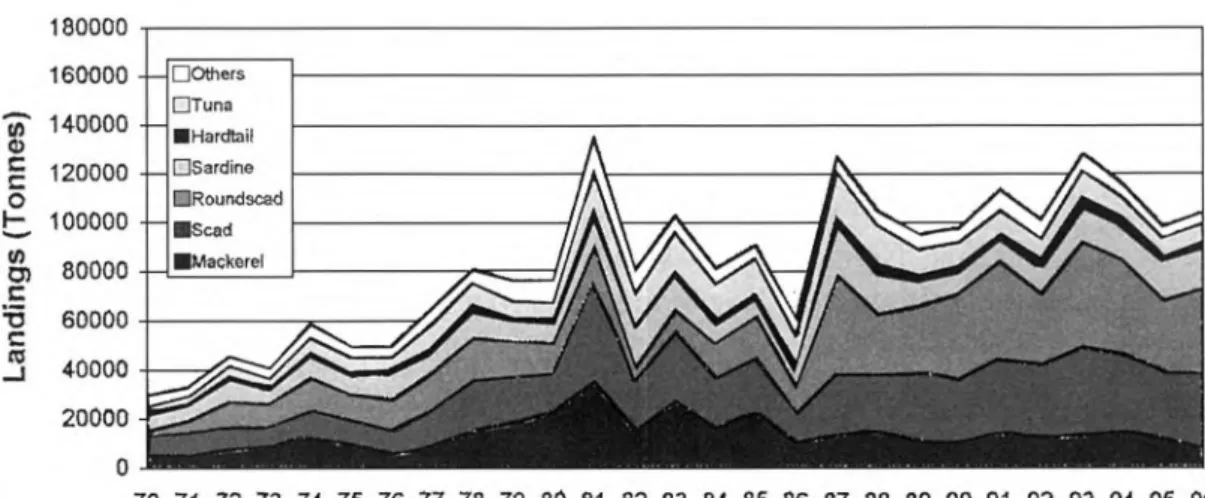
MALAYSIA
- INTRODUCTION
- PROFILE OF THE MARINE FISHERIES ZONES IN SABAH 2.1 Fishing Zones
- STATUS OF THE MARINE FISHERIES INDUSTRY IN SABAH 3.1 Potential yield
- Fishing vessels
- Fishermen population
- Fish landing monitoring system
- Marine fish landings by zones
- Pelagic Resources
- Demersal resources
- Prawn resources
- Fisheries Resources Research Program
- CONCLUSION AND RECOMMENDATION
- ACKNOWLEDGEMENT
Modern and traditional gear are used in most fishing activities conducted in coastal waters (less than 30 nm from shore). Most of the preliminary research conducted in the past is focused on the west coast of Sabah.
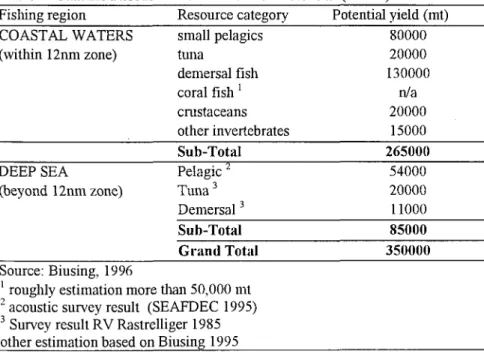
COUNTRY STATUS REPORT
STATUS OF PELAGIC FISHERIES RESOURCES OF SARAWAK, MALAYSIA
- FISHERIES 1 Fishing Fleets
- Fish Landings .1 Overall
- PELAGIC FISH SPECIES COMPOSITION 1 Coastal Pelagic Fish
- Offshore Pelagic Fish
- Tuna
- BIOMASS AND EXPLOITATION OF PELAGIC FISH
- FISHERIES MANAGEMENT
- FISHERIES RESEARCH
- REFERENCES
The other important groups are sharks, pomfret (Pampus sp., Parastromateus sp.), shad (Tenualosa sp.) and longfin herring (Opisthopterus sp.). The offshore pelagic is dominated by 8 groups such as e.g. round shad (Decapterus russeli, Decapterus macrosoma), single fillet shad (Selar mate), bigeye scad (Selar crumenophthalmus), Indian mackerel (Rastrelliger kanagurta), black pomfret (Formia niger), yellow banded scad (Selaroides leptolepis), hardtails (Megalaspis cordyla) and sardines (Dussumiera sp.) (Table 6. The increase in the number of small fishing boats and efficient fishing methods in the estuary has almost depleted the shad (Tenualosa sp. ) stock.
Breeding efforts have also reduced stocks of more valuable species such as Spanish mackerel (Scomberomorous sp.), longfin herring (Opisthopterus sp), threadfin (Polynemus sp.) and longtail flounder (Panna microdon).

THAILAND
In the Andam sea, the main fishing group of Indo-Pacific m ackerel is located in the lower part along the coast. In addition to the previous results, which proved to be useful in relation to the status of pelagic resources and fisheries in the Anda n Sea, such as for Thai fishermen for offshore fishing. This is because of the rapid development and expansion of pelagic fisheries in the Gulf of Thailand and the A ndam Sea in the past two decades.
Ocean Resource Investigations in the area of Phuket, Phang Nga and Krabi Provinces.
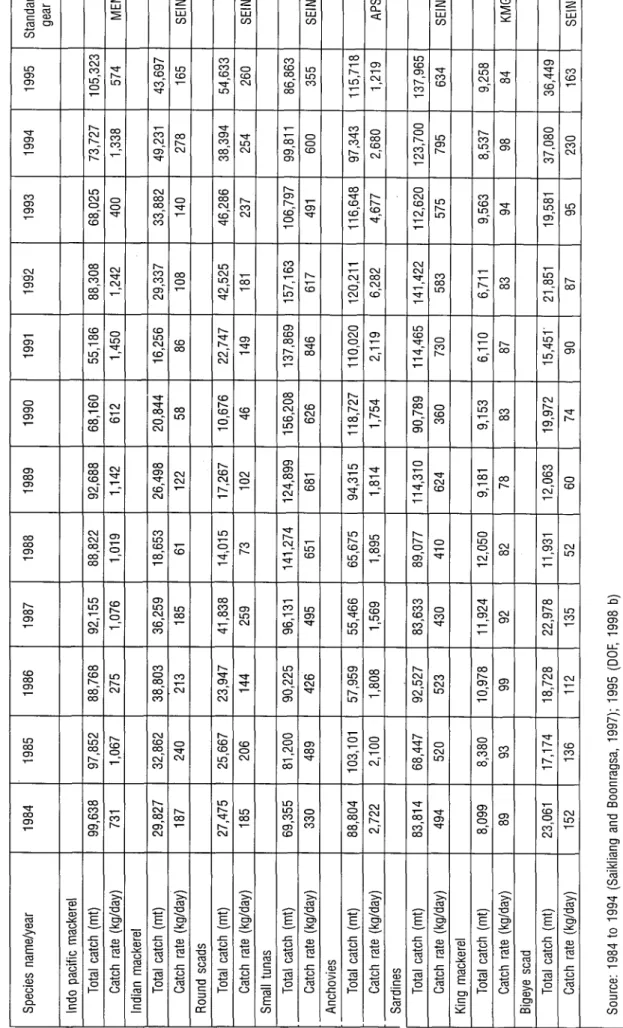
VIETNAM
Problems of Shared Fish Stock in Vietnam
Introduction
In the joint Vietnam-China survey of demersal fishery resources in the Gulf of Tonkin and in 1960-1961 the joint Vietnam-Soviet integrated survey of fishery resources in the Gulf of Tonkin and adjacent waters of the South China Sea, including the Paracel and Spratly areas, have been performed. In the period from the survey of fishery resources in offshore areas was carried out on board chattering commercial fishing vessels, pair trawlers were used in the Gulf of Tonkin and southeast of the South, and nets and longlines were used in the off-shore central waters of Vietnam. The Cooperative Survey on Assessment and Management of Marine Resources in the Gulf of Thailand between Vietnam and Thailand was conducted in 1997-1998 on board R/V BIEN DONG (1500 Hp) in Vietnam equipped with nets and R/V Chulabhorn (2800 Hp) ) in Thailand equipped with bottom trawl and vertical bottom line.
The SEAFDEC Interdepartmental Collaborative Research Program on Fisheries Resources in the South China Sea, Area IV (Vietnamese Waters) was conducted aboard the M/V SEAFDEC and R/V BIEN DONG in 1999.
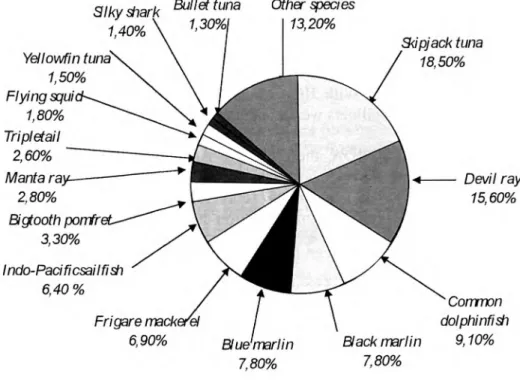
Problems concerning shared fish stock with in country
Fisheries management measures as practiced in Vietnam
To develop offshore capture fisheries by building more powerful fishing boats and using advanced fishing technology. To develop aquaculture in all water bodies through sustainable technology and friendly to environments and natural ecosystems. HAI VÂY 68 A riom a indica ( D a y ) In d iaan drifting fish Cá Chim Ān đi 69 Cubiceps baxteri McCulloch D ripper.
PHILIPPINES
Small pelagic resources of the South China Sea (potential transboundary shared stocks) as listed by Isa (1998) and as recorded in the Philippines. Notable are: United Nations Convention on the Law of the Sea (UNCLOS), Convention on International Trade in Endangered Species of Wild Fauna and Flora (CITES), World Trade Organization (WTO), Convention on Biological Diversity (CBD), Convention on Migratory Species ( CMS), Brunei-Indonesia-Malaysia-Philippines - East ASEAN Growth Area (BIMP-EAGA), and most recently but still under discussion, the Multilateral High Level Conference (MHLC). In Report of the Third Regional Workshop on Shared Equity in the South China Sea Area.
Extensive research into marine life on the islands of Warfel & Manacop (1950); Sebastian (1951); Ronquillo English steam trawlerExplored trawlable grounds from Manila to VisayasWarfel & Manacop (1950); Sebastian (1951); Ronquillo Experiment of the Philippine Bureau of Fisheries.
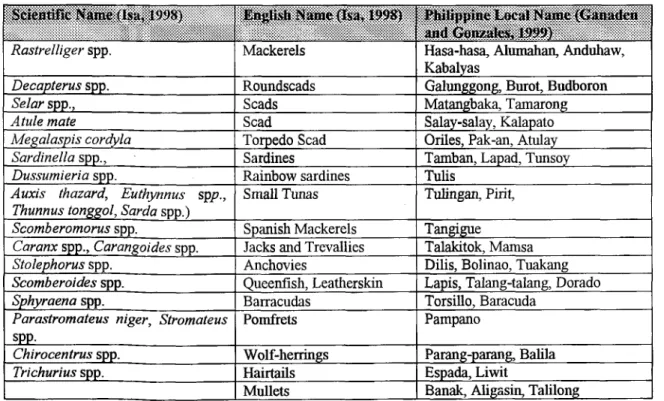
BRUNEI DARUSSALAM
Catch composition
For the purpose of obtaining the pelagic composition, statistical data were obtained from the regular weekly fish landing monitoring at selected sampling stations. Data collection has been ongoing for the past few years covering both the pelagic and the demersal species. Randomly selected fishermen using various gears have been monitored for the last six years for the collection of catch and effort data as well as the catch composition by gear.
The Department of Fisheries, however, is having difficulty obtaining enough samples for genetic and morphometric studies.
SUMMARY AND CONCLUSION
This year, collaboration with the University of Brunei Darussalam (UBD) is planned, especially in the field of genetics of shared stocks of pelagic and demersal fish. Very little oceanographic work is being done, but regular sampling and water quality monitoring is being conducted and more offshore sampling stations are proposed. Most pelagic species belong to the shared stocks. Therefore, the exchange of information, such as the genetics of these species, is necessary to properly manage resources.
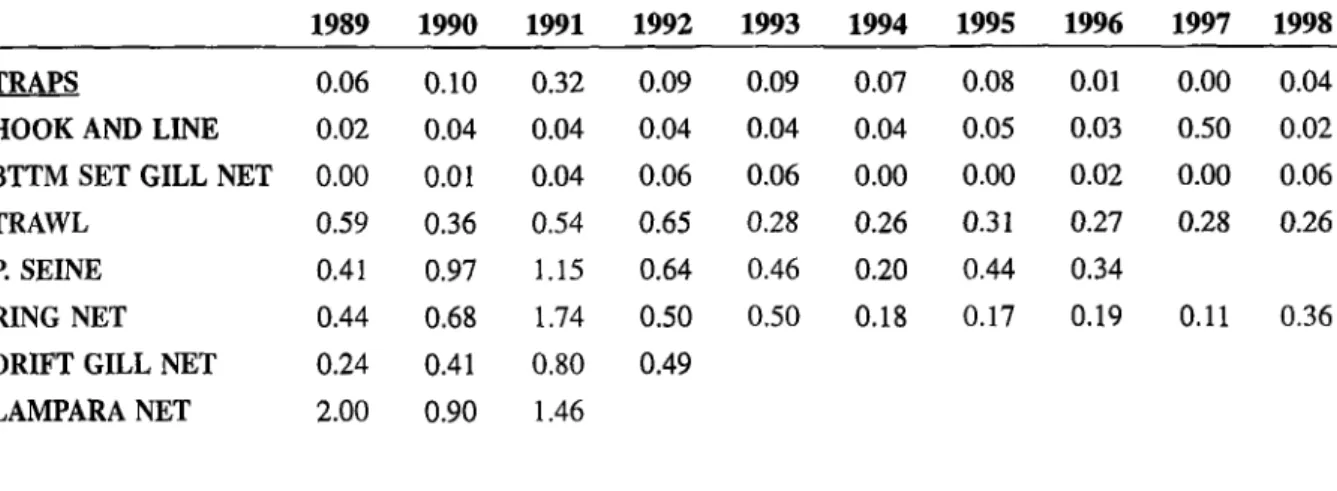
INDONESIA
UTILIZATION AND MANAGEMENT FOR THE RESOURCES OF SHARE STOCKS
The fundamental management principles emerged from the research are important both nationally and internationally in exploiting fisheries resources while ensuring their conservation, especially for shared stocks. The equity share formulation includes the definition, identification and distribution of the shares and other relevant biological factors. In terms of the use and management of fisheries resources (shared resources), there are generally different situations in equilibrium in the border area of Indonesia.
In other areas, although the management of the shared stocks is inadequate, such as in the border area between R.I and Australia and R.I and PNG, it has not yet shown the alarming condition, the management of the shared stocks at the Indonesian border as totality called to be handled.
RESEARCH PROGRAM AND MECHANISM FOR SHARED STOCK MANAGEMENT
- Research Mechanism
The goals of the research are, in the short or long term, mainly the creation of special measures for the management of the common stock. One of the research aspects is the tagging program, which is a very important measure to continue. Jointly conducting research on the common stock, such as the types of stocks being shared, stock abundance (and maximum sustainable yield), stock use and conservation.
International cooperation should be one of the strong foundations for shared equity management.
IMPLEMENTATION OF PAST RECOMMENDATIONS FROM THE SHARED STOCKS WORKSHOPS
THE SEAFDEC EXPERIENCE
Background
The FAO/SEAFDEC Workshop on Common Stocks in the Southeast Asian Region was first held in Bangkok on 18-22 February 1985. The workshop also identified potential common stocks for the region, which includes coastal pelagics, demersal fish, shrimp/shrimp and cephalopods . (see Table 1). Common migratory stocks include those migratory species of fish, crustaceans or molluscs that definitively migrate across the boundary of one exclusive economic zone.
A brief outline of the recommendations made during the FAO/SEAFDEC workshop on shared stocks is as follows: .. i) Identification of some species needs to be completed. ii) Participating countries must exchange samples and information at regular intervals. iii) Distribution of pelagic shared stocks by acoustic survey should be determined and FAO was requested to organize training courses on acoustic survey techniques. iv).
Research Work Implementations
The FAO Fisheries Report (FIRM/R337, 1985) identified some preliminary estimates of total fish stocks in the South China Sea. The current Fourth Regional Workshop on Common Stocks in the South China Sea was also held in Terengganu on 24-26 January 2000. To identify problems in managing common stocks in the South China Sea, ii).
To identify appropriate management systems for the common fish stocks in the South China Sea, and . iii).
Past recommendations and Implementations
Developing appropriate mechanisms for regional fisheries research and resource inventory in the South China Sea region.
Research works on shared fish stocks in the South China
- Research works
- Collaborative Surveys
- Training
Developing appropriate mechanisms for regional fisheries research and resource inventory in the South China Sea region. i) Taxonomic studies of fishes in the South China Sea. A field guide entitled "Field Guide to Major Commercial Marine Fishes in the South China Sea". Although the standard methodologies mentioned are still not complete, they can serve to provide young scientists with an understanding of the working procedures involved in data collection, in particular in similar work carried out by each Member State in the field of shared fisheries resources. iii) Population dynamics studies on Spanish mackerel in the South China Sea iv).
Tuna tagging .. v) Fishing effort statistics vi) Tuna statistics .. vii) Establishment of guidelines for acoustic survey methodology and analysis in the South China Sea. viii).
Future research works (2001-2003) related to shared stocks
Standardization of data collection methodologies and formats was one of the recommendations agreed at the previous workshop, and is currently being prepared by the Ministry of Development and Development. During the training, acoustic data obtained through the Interdepartmental Joint Research were used and analyzed. ii) Regional training course on FQ-70 operation. Training conducted in April 1999 specifically for researchers directly involved in the Interdepartment Collaborative Survey. iii) On-the-job training on cooperative tuna tagging in Brunei and Sabah waters, followed by tuna tagging in Malaysian and Thai waters.
Technical Working Group Meetings/Regional Workshop on Research and Management of Common Fish Stocks in the South China Sea.
Conclusions and recommendations
The Shared Stocks Collaborative Research Project for Regional Implementation for the Identification and Verification of Shared Stocks in the Southeast Asian Region. Research cooperation on shared stocks of round skipjack, mackerel and tuna should be organized and carried out among the countries of the Southeast Asian region. Recommendations from the Third Regional Workshop on Shared Equity in the Southeast Asian Region.
Report of the regional workshop on the collection and management of data related to common stocks in the Southeast Asian region.
Annex 13
- Survey area and period
- Research Vessel
Overview of Status and Biomass of Pelagic Fisheries Resources in the South China Sea Area. MV SEAFDEC conducted two acoustic surveys in the Gulf of Thailand and along the east coast of Peninsular Malaysia. In the West Coast of Peninsular Malaysia recorded higher percentage of Indian mackerel in catch.
In Proceedings of the First Technical Seminar on Marine Fisheries Resources Survey in the South China Sea: Area I.
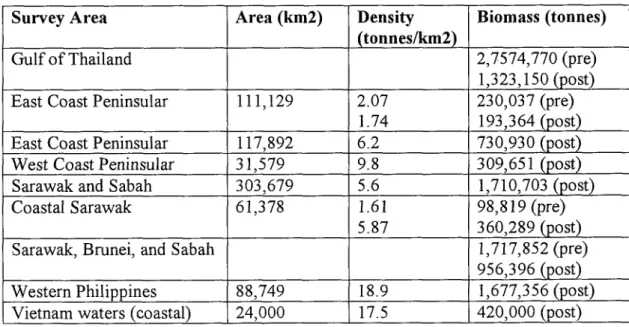
STOCK SHARING AMONG NEIGHBORING COASTAL STATES
KATSUYAMA
Stock Sharing Among Neighboring Coastal States
KATSUYAMA Japan Fishery Agency
In the Indian Ocean, the IOTC (Indian Ocean Tuna Commission) has already been established, and for the Western Central Pacific, an early establishment of a regional fisheries management organization is being considered by the MHLC (Multilateral High Level Conference). Regarding the MHLC, it is not possible to predict the course of its discussion because some countries argue that the Southeast Asian region should be included in the Convention area. I expect that such mitigation measures in the coastal area of Southeast Asia will also be considered.
It is widely recognized that demersal fish stocks in the Southeast Asian region, especially in the coastal area, are in a difficult situation.

